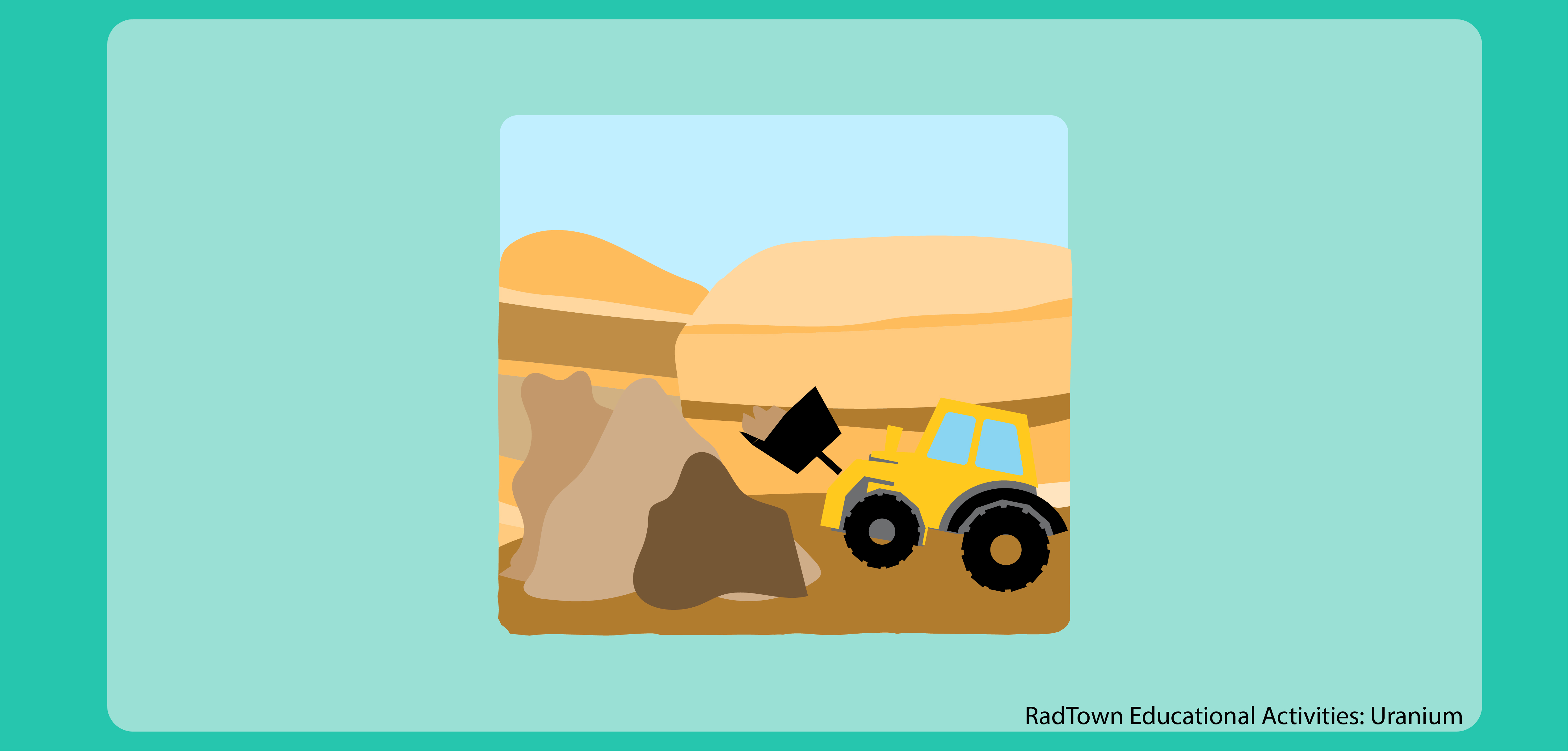RadTown Uranium Activity 2: Radiation and Uranium Myths and Facts
Sometimes, movies and television shows get creative with the ways they talk about radiation. Think of a recent movie, television show, comic book, or novel that you’ve seen or read recently: more likely than not, you’ve seen a radiation myth in action! This activity helps students separate myths from scientific facts, and helps kick off units about radiation and its effects on your health. This activity is intended for middle and high school students.
- Objectives
- Next Generation Science Standards
- Materials and Resources
- Printable Worksheets and Classroom Aids
- Time
- Vocabulary
- Directions
- Common Core State Standards
Objectives
Students will:
- Explore their views of radiation and uranium.
- Assess their knowledge of radiation and uranium.
- Examine and correct any radiation and uranium misconceptions they may have.
Next Generation Science Standards
The concepts in this activity can be used to support the following science standards:
- PS1. Structure and Properties of Matter
- PS4. Waves and Electromagnetic Radiation
- ESS3. Earth and Human Activity
Materials and Resources
Each italicized document title can be found at the bottom of this page, and is available for printing and distribution.
- Uranium: Teacher Background Information
- Vocabulary Materials
- Uranium Myths and Facts Quiz (one per student, pair or group) and Uranium Myths and Facts: Teacher Answer Key
- Uranium Views Worksheet (optional; one per student, pair or group)
- Board or computer and/or projector for listing students’ responses (optional for Step 2)
Printable Worksheets and Classroom Aids
- Uranium Myths and Facts Quiz (pdf)
- Uranium Myths and Facts: Teacher Answer Key (pdf)
- Uranium Views Worksheet (pdf)
Time
45-60 minutes, not including optional activities or extensions.
Vocabulary
- Atom
- Alpha particle
- Beta particle
- Gamma rays
- Ionizing radiation
- Nuclear energy
- Radiation
- Radioactive atom
- Radioactive decay
- Radiation exposure
- Radon
- Uranium
- Uranium milling
- Uranium mining
Directions
- Start with a vocabulary activity if students are not familiar with uranium and the vocabulary used in this activity.
- Ask students to share what they know about radiation, radioactive elements like uranium, and radiation exposure. List their responses for all to see.
- Review the list and ask the class to decide whether each is a fact or myth. If students have not previously done so, ask them to provide examples of myths (such as, radiation exposure will make you glow).
- Explain that we may receive misinformation from various sources (like movies, comics, video games, other media sources and people) and perceive it to be true when in fact it is not.
- Explain to the students that they will be completing a myths or facts quiz. The quiz is not to be graded but is a fun way to determine what students know about uranium. Let them know that it’s okay if they don’t know the answers to the quiz. It’s meant to be a learning tool. Distribute, and direct students to complete, the Uranium Myths and Facts Quiz.
- Conclude by reviewing the correct responses using the Uranium Myths and Facts: Teacher Answer Key. Determine what the greatest misconceptions were for the class based on incorrect responses. Discuss how this activity has changed or confirmed students thinking about radiation. Explain that an important part of science and gaining knowledge is to investigate and verify information with reliable resources.
- Optional activities or extensions:
- Have students share the Uranium Myths and Facts Quiz (or create another quiz or survey to share) with community members, siblings or parents. Analyze the responses and determine how educated community members are about uranium-related radiation.
- Direct students to complete the Uranium Views Worksheet by talking with friends, family and community members. Answers from students will vary.
- Select all or several events from the Highlights in Uranium History (see RadTown Uranium: Teacher Background Information) and print each event on a separate sheet of paper. Options include printing the dates with the event, having students research the event to determine the date or range of dates, or providing the dates after students form predictions about when the events occurred. Provide students with an event and direct them to create a timeline by lining up in the order in which the events occurred. Review and confirm the correct order of events. Discuss how these events have potentially led to myths that exist today and how these events have also led to us learning facts about uranium and radiation.
- Have students create public messages that educate the public and address misinformation and misconceptions. Ideas may include brochures, posters, cartoons, videos or radio announcements, raps, poems and articles. These materials could be shared within the school and community.
The concepts in the Radiation and Uranium Myths and Facts activity align with the following:
- CCSS English Language Arts Standards for Literacy in History/Social Studies, Science, & Technical Subjects:
- CCSS.ELA-LITERACY.SL.6-12.2 Comprehension and Collaboration
- CCSS.ELA-LITERACY.SL.6-12.4 Presentation of Knowledge and Ideas
- CCSS.ELA-LITERACY.RST.6-12.6 Key Ideas and Details
- CCSS.ELA-LITERACY.WHST.6-12.1 Text Types and Purposes

